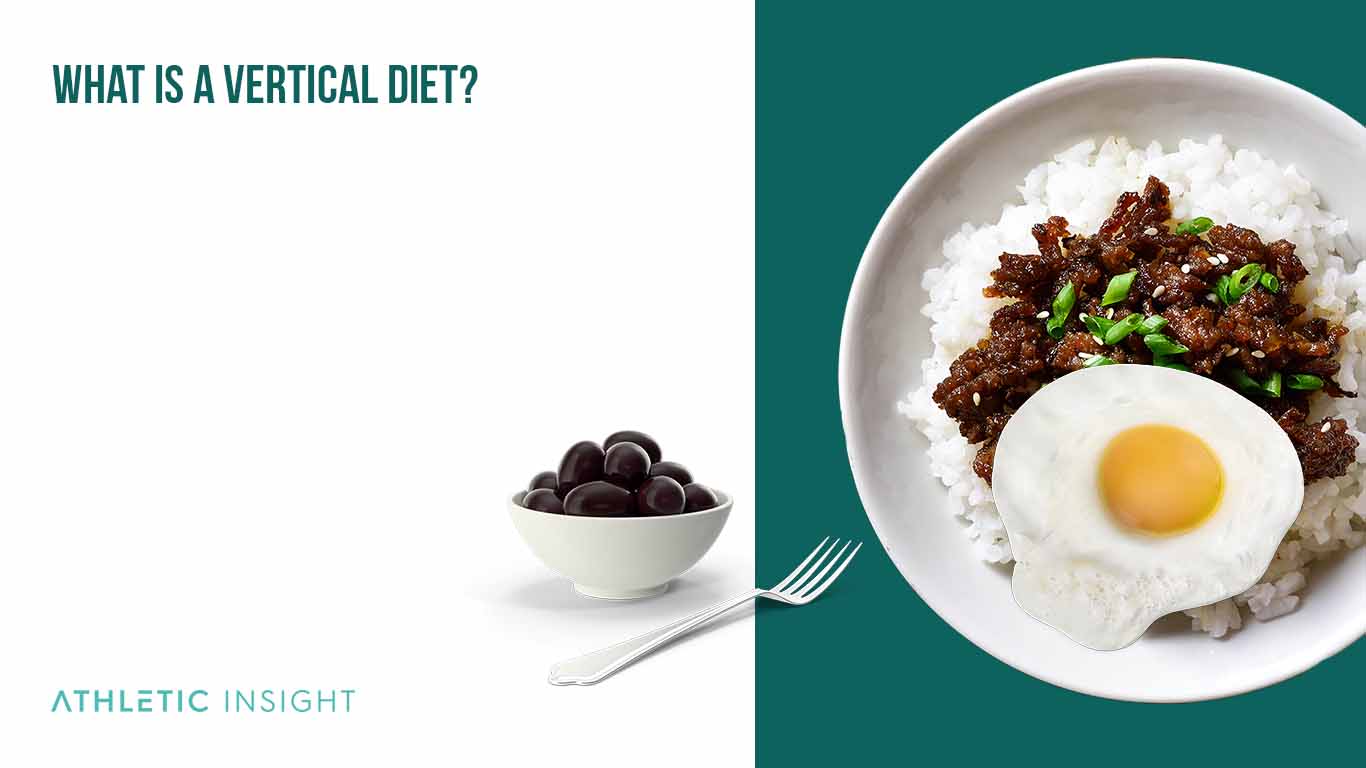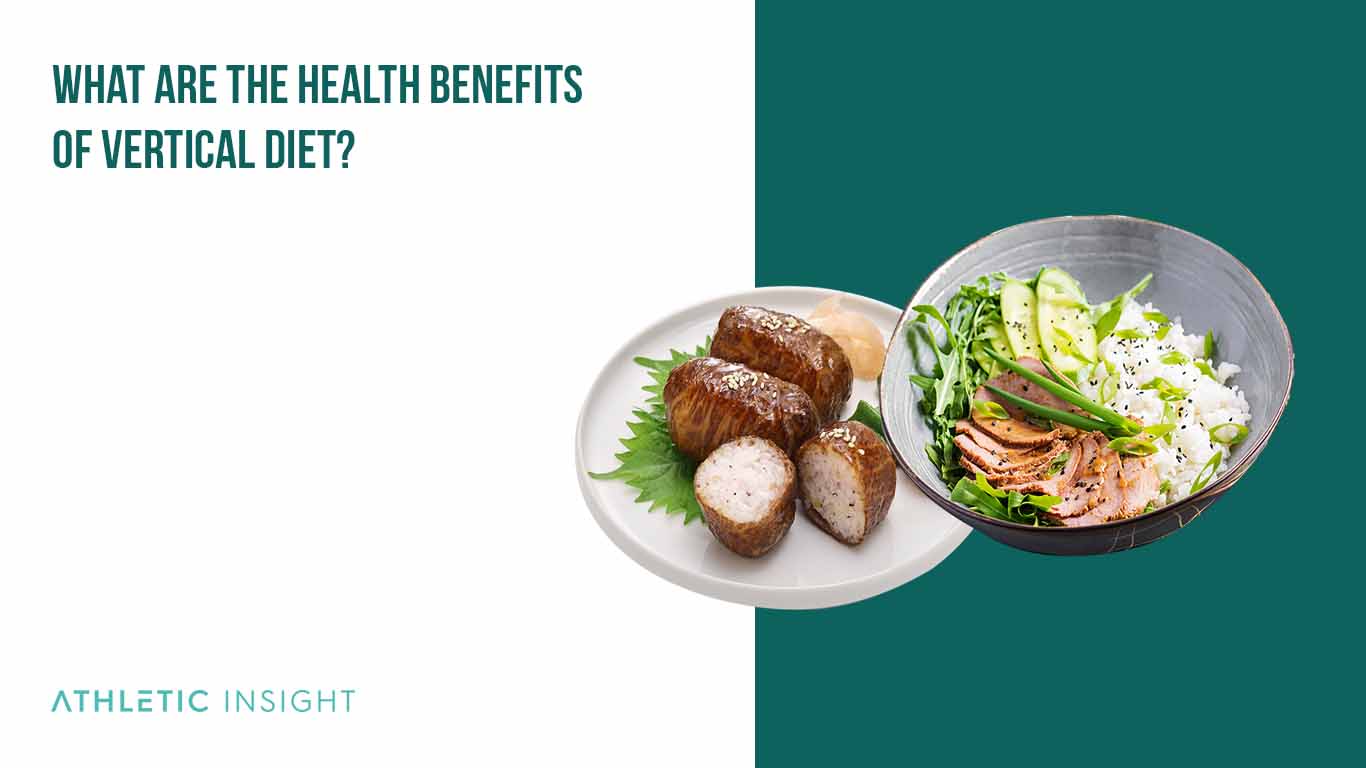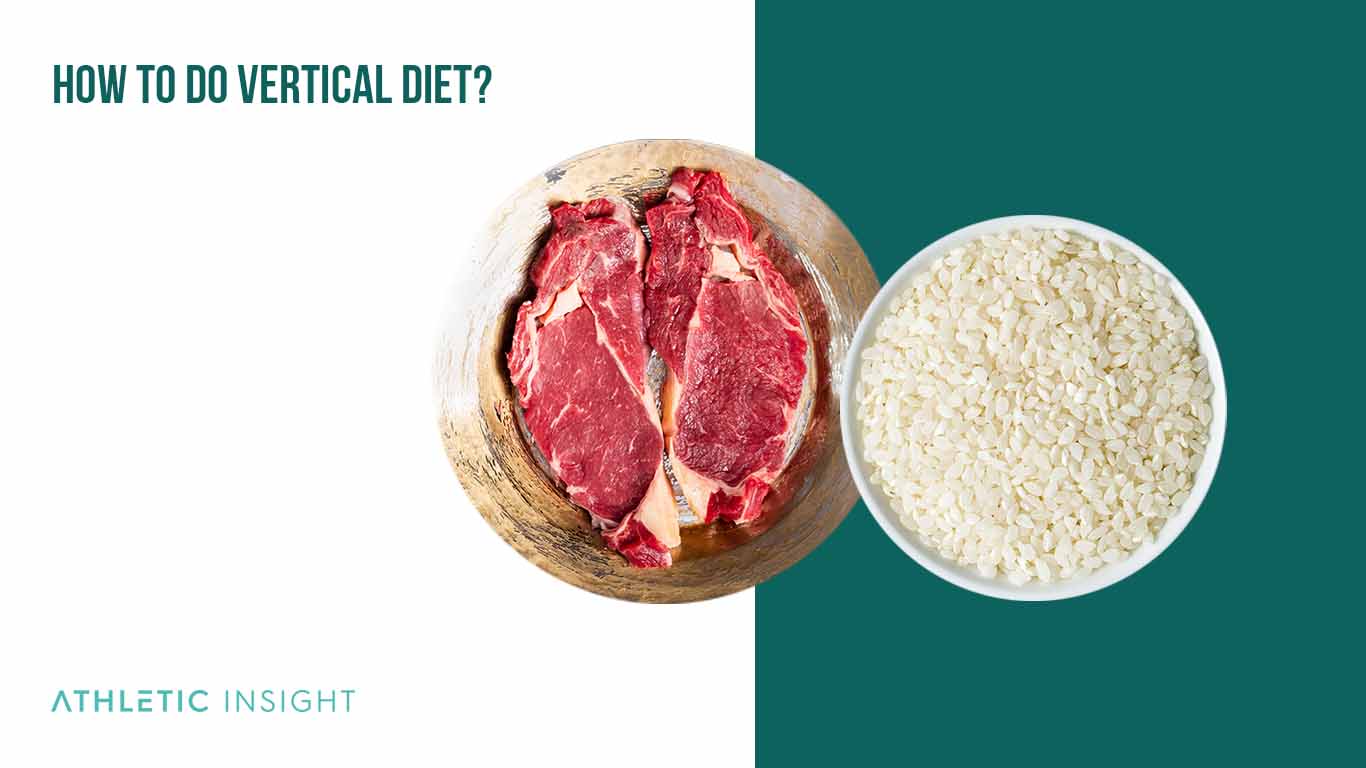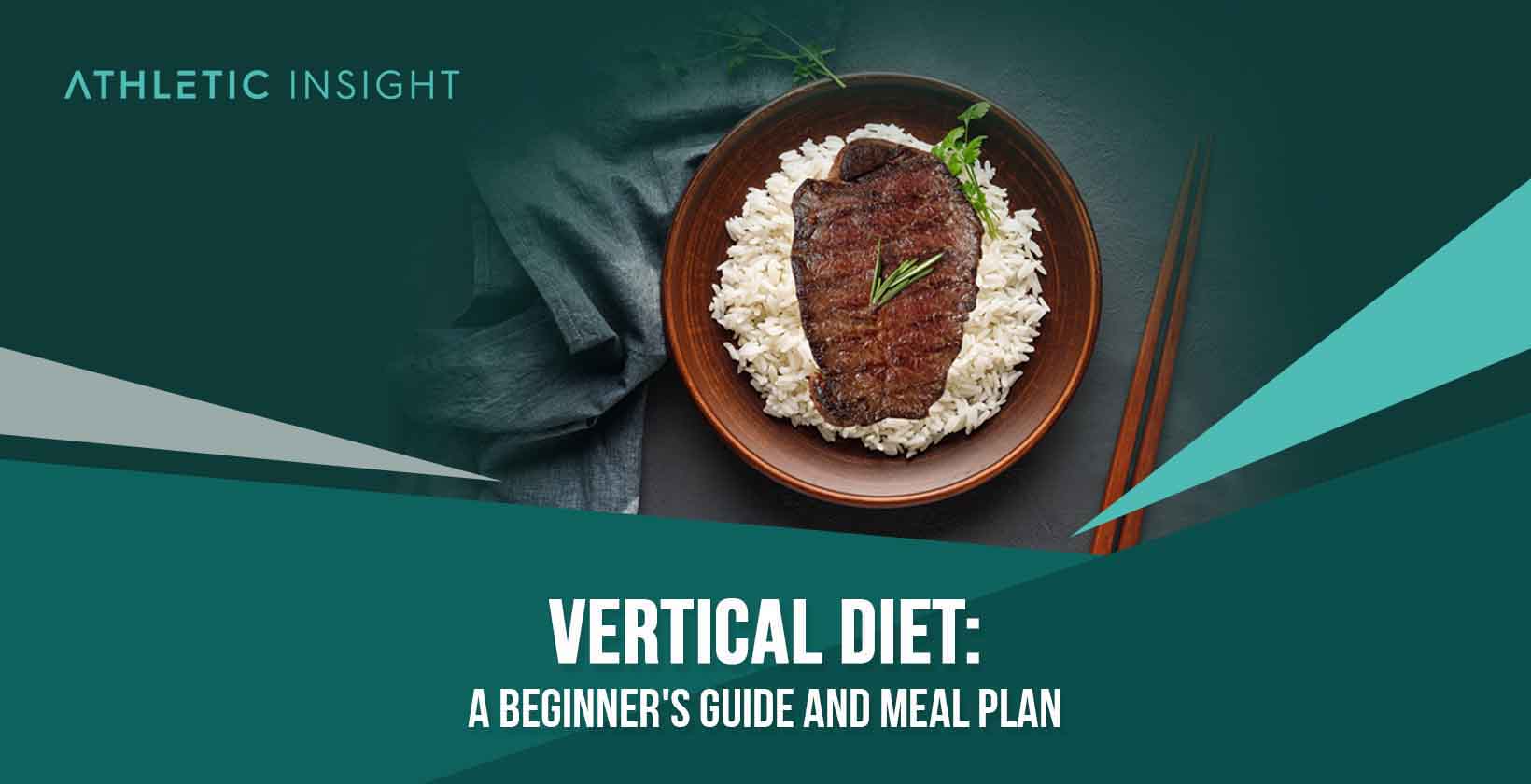The vertical diet is a type of eating plan that athletes can use to consume enough calories to provide energy to perform at a high level. For individuals who need to gain weight or consume a high number of calories to maximize their workout, build strength, and increase mass, using the Vertical diet can prevent weight loss or performance determinants.
The benefit of using the vertical diet is consuming easily-digestible food that provides enough nutrients. Individuals can diet by consuming red meat, organic chicken, unprocessed fats, light fish, eggs, full-fat dairy, low-GI vegetables, and all fruits. The most popular vertical diet type includes eating nutrient-dense foods, eating only digestible food, and consuming a high level of antioxidants, vitamins, and minerals.
What is a Vertical Diet?
The vertical diet is a nutrient-rich and easily-digestible diet plan that helps individuals who need to gain weight or athletes eat enough calories to maximize their performance or get the most out of their workouts. The vertical diet can also be used to lose weight by eating only organic and non-processed foods.

The main premise behind the vertical diet is consuming foods that do not slow down the digestive system. Eating foods that are easy on your body can increase the absorption process and quick delivery of nutrients. Two of the most popular foods athletes consume on the vertical diet are white rice and red meat.
How does Vertical Diet Work?
The vertical diet works by slowly increasing the number of calories you eat daily from nutrient-rich foods. The step-by-step process of the vertical diet within the body includes the following steps.
- Individuals must determine their BMR (basal metabolic rate) to see the number of calories they consume daily and the total energy their body burns while at rest.
- If the goal is to lose weight, subtract 300-500 calories from your BMR. If you want to gain weight, consider adding 300-500 pounds daily to increase mass.
- The best way to increase calories to your vertical diet is to add a portion of white rice or red meat to your meal plan.
The body’s initial reaction to the vertical diet is better gastrointestinal digestion. Athletes can perform at a higher level by eliminating foods that can clog up the digestive system. Furthermore, the vertical diet can help individuals build mass and increase their strength through high-intensity workouts without feeling full or heavy during training sessions.
What are the health benefits of a Vertical Diet?
The vertical diet’s key benefits are that it can help people concerned with reducing GI symptoms, building muscle and consuming nutrient rich foods.

- Reduces GI symptoms: One of the main perks of following the article diet is that users can reduce symptoms of gastrointestinal distress that can make recovery harder and make exercise more difficult. Heavy lifting and athletic activities can be hard on your stomach, limiting your diet to low-GI foods that are easy to digest can improve your athletic performance.
- Builds muscle mass: The next perk of using the vertical diet is to increase your muscle mass, build strength, and boost your athletic performance without feeling full, tired, or slow during training. Athletes can make muscular gains without digestion problems by focusing on fast-digesting food and consuming high-calorie meals to provide ample energy.
- Consume nutrient-rich foods: The last benefit of using the vertical diet is that individuals will consume only nutrient-dense, high-quality, and non-processed foods that are best for optimal health. Instead of using another type of diet, like a horizontal diet, that uses foods from various food groups, like legumes and dairy, the vertical diet only uses a few food groups that help an individual with the digestion process.
What are the health risks of a Vertical Diet?
In addition to the benefits of the vertical diet, a few drawbacks could cause health concerns for some individuals. For those trying to lose weight or stick to a long-term healthy eating plan, following the low-GI diet (Vertical Diet) may not be the best option.
Eating a diet low in carbohydrates is disadvantageous for individuals who want a well-rounded diet with different starches, legumes, and grains. Eating a “low FODMAP” diet can result in gastrointestinal issues due to a change in the body’s microbiome and gut bacteria.
Often, people do not follow a specific diet because of its effect on a person’s lifestyle and preferences. Changing your meal plan to avoid almost all carbohydrates can be very restrictive for “normal people.”
Following the vertical diet is not suitable for vegetarians since it includes red meat as one of the main food groups. Vegetarians must focus on alternative forms of protein and consume healthy carbohydrates, such as legumes and grains. The vertical diet limits grain consumption and doesn’t provide enough energy or calories for vegans or vegetarians.
Lastly, following the vertical diet can lead to long-term gastrointestinal issues if not followed correctly. Although the point of this diet is to limit GI issues when it comes to short-term training cycles, individuals who eat a vertical diet lack fiber in their diet that helps boost their gut’s functioning.
What are the foods that you can eat while on a Vertical Diet?
There are specific food groups on the vertical diet food list that you can eat on a vertical diet.
- Fruits: All fruits, even including oranges, melons, grapes, grapefruits, and strawberries
- Vegetables: Low-GI vegetables, such as celery, peppers, cucumbers, spinach, and carrots
- Grains: Amaranth, burghul, buckwheat, corn, millet, oats, quinoa, rice
- Legumes: Soaked legumes and oats
- Nuts: Brazil, chestnuts, macadamia, peanuts
- Seeds: Chia, flaxseeds, pumpkin, sunflower
- Healthy fats: Unprocessed fats, full-fat dairy
- Proteins: Salmon, beef tallow, hormone-free chicken, bison, grass-fed beef
The most important foods for a vertical diet include red meat, some fruits, white rice, low-FODMAP vegetables, potatoes, leafy greens, and omega-3 fatty acids.
What are the foods that you should avoid while on a Vertical Diet?
Individuals should avoid certain vertical diet foods when eating the vertical diet.
- Meat: Sausage, salami, bacon
- Poultry: Non-organic chicken
- Fish and shellfish: Fish with garlic and onion
- Meat-based ingredients: Meat sauces and meat gravies with added sugar and processed ingredients
- Eggs: Organic and/or free range options
- Dairy products: Flavored yogurt, heavy cream
The main types of food that should be avoided include high-GI grains, vegetable oil, onions, high-FODMAP vegetables, sugar, processed foods, sugar alcohols, and caffeine.
What are the Best Recipes for Vertical Diet?
The best recipes for a vertical diet areBison Vertical Diet Monster Mash, Egg breakfast, rice with beef, potato and chicken mash, and any other healthy snack.
- Bison Vertical Diet Monster Mash: Combine gold potatoes, red bell pepper, zucchini, ground bison, beef bone broth, and spices into a cast iron skillet or pan.
- Egg breakfast: Use scrambled eggs, cheese, and red meat for a filling omelet, with a side of raw almonds and carrots.
- Rice with beef: Cook white rice and add red meat or beef, sweet potato, and red pepper.
- Potato and chicken mash: Combine sweet potatoes with chicken breast, bone broth, carrots, spinach, and salt.
- Healthy snack: For a healthy snack during the day, drink a glass of whole milk and have raw carrots with full-fat yogurt.
What is a Sample Vertical Diet Plan?
A sample vertical diet plan with vertical diet meals is beneficial for reaching optimal nutrient levels.
Breakfast Options
- Whole eggs with red meat, full-fat yogurt, and a side of berries for a vertical diet breakfast (egg omolet)
- Greek yogurt with strawberries, coffee, and full-fat milk
Lunch Options
- Burghul with salmon, peppers, and spinach
- Quinoa with beef tallow, spinach, bell peppers, and peanuts
Dinner Options
- Rice with bison or grass-fed beef, celery, and roasted carrots
- Hormone-free chicken with eggs, zucchini, and a side of grapes
What are the Vertical Diet Macronutrients?
The vertical diet macros are one gram of protein per pound of bodyweight, 0.3 grams of fat per pound of bodyweight, and the rest of your calories consumed through carbohydrates,
The best protein sources for individuals following the vertical diet are salmon, eggs, red meat, and full-fat dairy. The best fat sources for individuals on the vertical diet are full-fat dairy, butter, and ghee. The top carbohydrate options for those on the vertical diet are bell peppers, fruits, white rice, and potatoes.
How to do a Vertical Diet?
Individuals should calculate their BMR before determining how many calories they must consume daily. The number of calories a person should eat can be calculated using your body weight to determine how many grams of protein, fat, and carbohydrates should be consumed. For example, a 200-pound person will need 200 grams of protein, 60 grams of fat, and the rest should be carbohydrates.

The proposed time frame for the vertical diet is dependent on a person’s athletic desires and personal preferences. If an individual enjoys the low-GI food and they are meeting their athletic needs, they can stay on the vertical diet, bar any gastrointestinal issues. The best protocols to follow with the vertical diet are the following practices.
- Consume only low-FODMAP foods
- Eat high amounts of protein to stay full and avoid overeating carbohydrates
- Remain consistent with your meal plan and vertical diet meal prep
- Focus on adding micronutrients to your diet
- Make sure you plan your vertical diet on a budget
Who should do a Vertical Diet?
There are certain individuals who may best benefit from doing a vertical diet such as athletes who need to maximize their performance, individuals who want to gain weight, athletes who want to gain muscle mass, and those who have gastrointestinal problems. Consuming a vertical bodybuilding diet is also a smart option for diabetic athletes who need to maintain a consistent level of blood glucose.
What are the facts about Vertical Diet?
There are key facts that make the vertical diet desirable among athletes and bodybuilders. The first week of the vertical diet usually brings a difference in an individual’s nutrient absorption and gastrointestinal processes.
The vertical diet ranges in cost per month, with some users minimizing their grocery costs due to the low price of white rice and bulk vegetables. Individuals should avoid purchasing organic and expensive cuts of meat for every meal of the day.
The vertical diet vs. the Atkins diet brings different benefits. The Atkins diet lets individuals gradually increase carbs but restricts specific fruits, dairy products, and legumes. The vertical diet restricts carbs to a higher level. However, when comparing both diets, the Atkins diet is more restrictive at the beginning. The vertical diet is usually easier to follow and better for optimal digestion.
The vertical diet is good for weight loss because it promotes nutrient-dense foods, limited carbs, and non-processed foods and enhances absorption. Lastly, the vertical diet is low in saturated fat and cholesterol, which is beneficial for heart health.
Is Vertical Diet considered a healthy diet?
No, the vertical diet is a very restrictive and limited eating plan that is not considered a healthy diet. However, it can be considered a healthy option for athletes who are looking for specific performance benefits or using the vertical diet for fat loss.
Is Vertical Diet expensive?
No, the vertical diet is not expensive when compared to other eating plans. However, the vertical diet can become more costly if individuals purchase expensive cuts of meat, like grass-fed bison, for every meal of the day.
What does a Vertical Diet PDF Involve?
There is a vertical diet PDF for providing information to potential athletes called ‘The Vertical Diet’ by Stan Efferding. Individuals can download this vertical diet PDF by clicking on “PDF”> “Download”> “Vertical Diet PDF Download” on their website.
How to Find a 3D Vertical Diet Printable Plan?
Those who are interested in printing the Stan Efferding vertical diet plan pdf can do so by using Google photos, finding the printable PDF on Amazon, purchasing the book in person, finding the vertical diet pdf on Reddit, or using Studocu.
What are the Similar Diets to Vertical Diet?
Other diets similar to the vertical diet are keto diets, the Atkins diet, and a low-carbohydrate diet.



